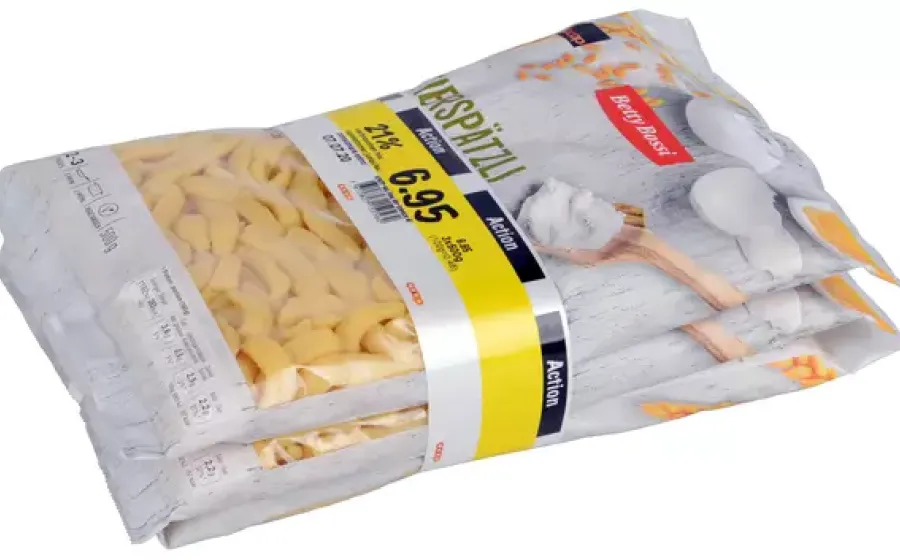
Do you know the tapes printed with "Action" that bundle several products into multipacks in the supermarket? Or the transparent bands that hold together the different sized goods ordered online in the shipping carton? Do you take all the information about zucchinis, bananas or apples in cardboard trays that you buy in the vegetable section at retail from printed bands? Are you familiar with the bands that hold together stacked printed items, cardboard or corrugated cardboard in such a way that the edges of the fragile products are not damaged? Or have you ever bought convenience food or other products where a double-side printed band up to 100 mm wide, for example, holds a tray packaging securely together and at the same time takes care of all the communication around the product? That - and much more - is banding.
How banding works
In banding, a band of paper or film up to 100 mm wide is placed around one or more products by a banding machine and welded with the use of a sonotrode with ultra-sonic technology or, in fewer cases, with a hot wedge. Glue or other adhesives are not used. The continuously adjustable tension of the band varies depending on the properties of the product or application. It reacts to the resistance of the product to be banded. For soft and fragile products, the band tension is alternatively controlled by a fixed length or soft length. Also possible: Sensors measure the product to be banded and automatically adjust the band length. This variant is used, for example, when banding mail packages of different sizes that are fed to the banding machine by a conveyor belt (end-of-line automation).
Printed and unprinted bands
Depending on the application, bands are used unprinted, printed on one or both sides in advance using the flexographic printing process, and additionally or exclusively printed with a thermal transfer printer during banding. While the flexographic printing process focuses on the branding of the product, thermal transfer printing is used to print variable information such as the producer, the best-before date, the batch number, the weight or a bar code. Printed bands therefore also replace labels. Unprinted bands are often used in intralogistics when logistical units have to be formed to simplify processes.
Different banding machines for different applications
Depending on the production volume and requirements, different banding machines are used: mobile stand-alone models or fully automatic banding machines integrated into the production line.
In the simpler standalone models, the banding process is usually triggered manually (e.g. via a foot pedal).
In automated applications, sensors and I/O or bus-based interfaces come into play. Example: A robot holds the product to be banded in the banding machine, the sensor confirms the presence of the product and the banding process is triggered via the interface.
In fully automatic applications, the banding process is triggered by a PLC (programmable logic controller). Depending on the application, the process is optimized by different signals and factors. Depending on the machine design and the system concept, a performance of up to 300 products per minute or 100 banding processes per minute can be achieved.
Banding is environmentally friendly
Banding stands for "only as much packaging as necessary". Bands often replace shrink films or sleeves, thereby significantly reducing plastic and material consumption. Ultrasonic banding machines are also extremely energy-efficient and thus help to reduce CO2 emissions. Because a banding machine with integrated thermal transfer printer also replaces the labeling machine, additional material and energy can be saved depending on the application. In most countries, bands made of coated paper are recycled via the paper cycle. If the band has to be made of paper, but the proportion of foreign material must not exceed 5%, our partially coated paper is used. Bands made of film are made of pure and high-quality PP, HDPE or PLA. The amount of recycled material is at least 20% for all foils. The thinnest film (FTU) has a thickness of 50 my. All banding films are considered mono-material and are 100% recyclable.
Banding stands for frustration-free packaging
Banding not only reduces plastic and packaging material, but also stands for frustration-free packaging. Bands can be opened by hand without any problems: Either at the weld seam in the case of bands made of film or at any position in the case of bands made of paper. Amazon shows what constitutes frustration-free packaging and how important it is in the video Frustration Free Packaging.



